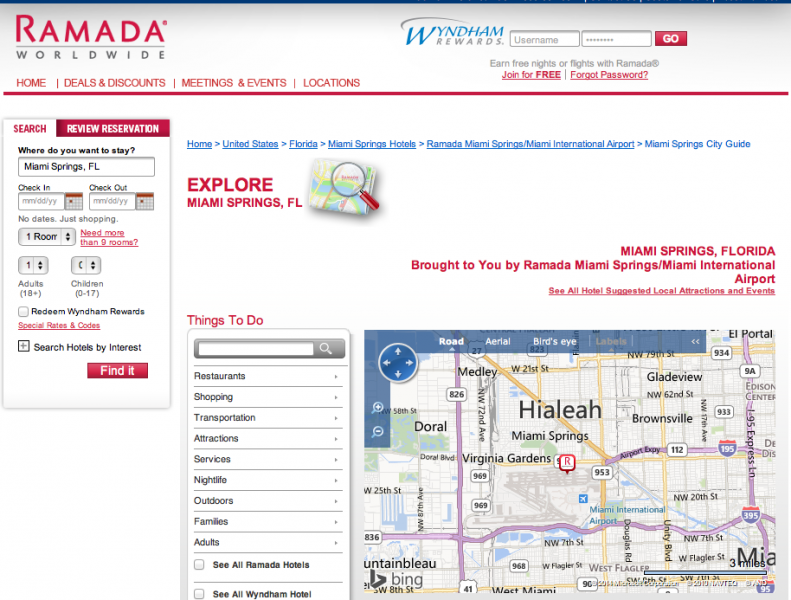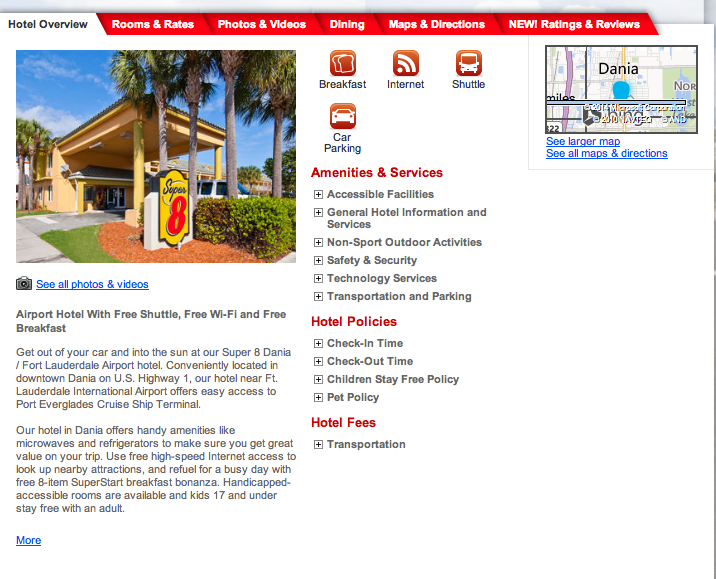Wyndham hones in on the ‘hottest trend of the year’
Is your hotel hyper-local enough? Are Google service-level agreements cramping your style? Can content deliver ROI? Pamela Whitby finds out
- Geo and hyper-locality: the hottest trend of the year
- Pinning ROI to content is still a challenge and the industry could do more
- Brands can sell more direct by creatively linking to local events and attractions
- The day of the bog-standard hotel pic is over!
- Could it be time to challenge Google’s three-month service level agreements for a more strategic approach to content?
In 2006, Wyndham Hotel Group considered itself to be something of a pioneer. At the time, it mandated hotels to put photographs on their websites and other distribution channels. But that was 2006 and we all know how things have changed since then. "We're doing all the right things but we realised we needed to enhance our online presence, says Danica Boyd, the group’s senior director of content operations, adding that 2014 will be “the year of digital media”.
The team has mapped out a three-year digital roadmap with a strategic focus on three core trends in content.
1. Gearing up to be geo-local and hyper-local: the ‘hottest trend of the year’
Many hotels are not the destination. So many brands - and Wyndham is no exception - are partnering with the likes of Bing, Google and soon Georama to show consumers where their hotels are on a map in order to make the best choice. At Wyndham, one big project has been to develop an explore city function that lets customers search for ‘things to do’ without leaving the brand website. “The same interactive functionality exists across each of our 15 brands,” says Boyd.

Wyndham launched this functionality in late December and continues to review and tweak the page to see what works and what doesn’t.
Another project has been to link their websites to local events right on the hotel's property pages. “The aim is to get consumer fully engaged on our website and not go to the competition,” says Boyd. “If we give them innovative content that they need and want so that ultimately they do not want to leave our websites," says Boyd.
2. Getting away from shooting only to the ‘brand standard’: video and images that stir emotion and deliver on detail
In 2014, a major strategic focus is on hotel photos and video. “We are pushing individual hotels to invest in new high-res photos/videos that stir emotion, work well for our tablet solution and work well for consumers,” says Boyd. “We’re moving away from shooting just to the brand standard.”
However, with 15 different brands ranging from economy right through to top-end luxury, Wyndham has had to come up with a set of specifications for video – for length, music and so on - that are flexible enough to work for all.
Two major video campaigns are set for release this summer. The first is focused on one specific brand in the US, which will then be expanded internationally. The second will work across all brands with, for example, a micro vignette that shows customers how to navigate to the deals and discount page.
Key performance indicators for video campaigns include:
- Number of shares
- Length of time on page
- Where next did the customer go in the path to booking
As part of the drive to build a stronger digital presence, Wyndham has implemented a new content management system and robust digital asset library using Adobe Experience Manager. “This has given us the tools and resources to do a better job of putting ourselves forward on all channels,” says Boyd.
One specific opportunity to raise their content game is in the ‘economy’ sector where typically hotels have produced bog-standard photographs. “Customers weren't able to see through their eyes the details that are at a hotel. For example, a fun Belgian waffle on the menu or that the outlets are located right next to their bed where they can plug their iPhone in,” explains Boyd, who in Miami will be sharing examples of how they are aiming to answer guest queries as they arrive at a property.
3. Linking return-on-investment more closely to content: the industry ‘can do more’
There is a constant evolution when it comes to content relevant to text and Wyndham is using multi-variant testing to find ways to tweak copy, add value to icons and so on, to see if that stirs the customer to move further down the booking path. “Content is one of the hardest things to measure specifically to ROI,” admits Boyd. That has always been a challenge for all that manage content in their own organisations, but Boyd is hoping that as analytics improve, they will better understand whether it was a promotion, hi-res photo of that Belgian waffle, or detailed property description that moved the customer closer to booking.

A big challenge, says Boyd, is working out how are you going to frame the story and then being consistent with that. Another big challenge is working out how to partner better with business partners like Google to get hotel content uploaded faster and it syndicated more strategically. “One of our challenges - and not just for the travel industry – is that Google has various ways to receive content or data, and their service level agreements for making changes can be up to three months.”
Like or not, travel brands have to play by Google rules – and that is constraining.
Join us in Miami for EyeforTravel’s Online Marketing Strategies for Travel where Danica Boyd, Wyndham Group Senior Director of Content Operations, will be speaking, alongside a number of other leading travel executives

